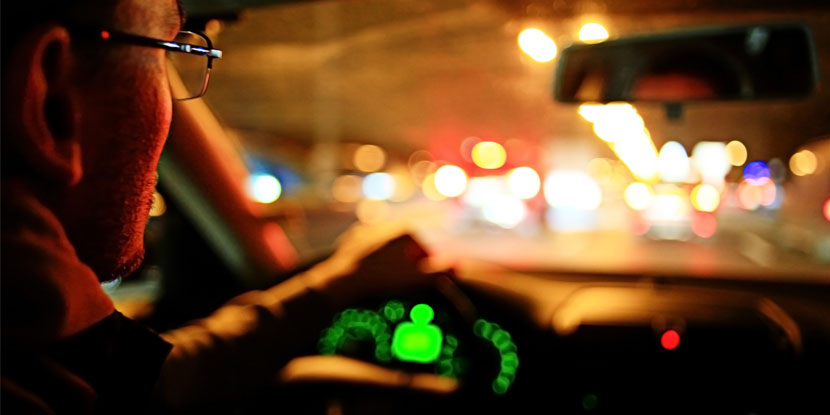
Driving and Glaucoma: What You Should Know
Glaucoma is a group of eye diseases that damage the optic nerve, which connects the eye to the brain. The most common type of glaucoma is open-angle glaucoma, which develops slowly and often goes unnoticed until it causes vision loss. As the disease progresses, it can lead to blindness if left untreated.
One of the biggest concerns for people with glaucoma is driving. Driving requires good vision, including visual acuity, visual field, and contrast sensitivity. Glaucoma can affect all three of these, and as a result, it can compromise the safety of the driver, passengers, and other road users. In this article, we'll discuss what you need to know about driving and glaucoma.
Visual Acuity and Driving
Visual acuity is the ability to see fine details and distinguish shapes and colors. It's measured using an eye chart, and the results are expressed as a fraction, such as 20/20 or 20/40. The first number represents the distance from the chart, and the second number represents the smallest letter size that can be read at that distance. For example, 20/20 means that you can read letters that are 0.8 mm tall from a distance of 20 feet.
In most states, the minimum visual acuity requirement for driving is 20/40 or 20/50 in at least one eye, with or without corrective lenses. Some states may have more stringent requirements, such as 20/40 in both eyes. If your visual acuity is below the minimum requirement, you may be prohibited from driving or required to wear corrective lenses while driving.
Glaucoma can affect visual acuity by causing damage to the optic nerve, which can lead to blurred vision, loss of contrast sensitivity, and difficulty seeing in low light conditions. In the early stages of glaucoma, these changes may not be noticeable, and the person may still meet the minimum visual acuity requirement for driving. However, as the disease progresses, the visual acuity may deteriorate, and the person may no longer meet the requirements.
Visual Field and Driving
Visual field is the extent of the area that can be seen while looking straight ahead. It's measured using a visual field test, which involves looking into a machine and pressing a button whenever a light appears. The results are plotted on a graph, and the areas of missing vision are indicated as dark spots.
In most states, the minimum visual field requirement for driving is 120 degrees of horizontal vision and 30 degrees of vertical vision in at least one eye. Some states may have more stringent requirements, such as 140 degrees of horizontal vision. If your visual field is below the minimum requirement, you may be prohibited from driving.
Glaucoma can affect visual field by causing damage to the optic nerve, which can lead to a loss of peripheral vision. In the early stages of glaucoma, this loss may not be noticeable, and the person may still meet the minimum visual field requirement for driving. However, as the disease progresses, the loss may become more significant, and the person may no longer meet the requirements.
Contrast Sensitivity and Driving
Contrast sensitivity is the ability to distinguish between shades of gray and to see objects in low light conditions. It's measured using a contrast sensitivity test, which involves looking at a chart with different levels of contrast. The results are expressed as a number, such as 1.5 or 2.5. The higher the number, the better the contrast sensitivity.
Contrast sensitivity is important for driving because it allows you to see pedestrians, road signs, and other objects in low light conditions. Glaucoma can affect contrast sensitivity by causing damage to the optic nerve, which can lead to a loss of contrast sensitivity. In the early stages of glaucoma, this loss may not be noticeable, and the person may still be able to drive safely. However, as the disease progresses, the loss of contrast sensitivity can become more significant, and the person may have difficulty seeing objects in low light conditions, which can compromise their safety while driving.
Driving with Glaucoma
If you have glaucoma, it's important to follow your eye doctor's recommendations regarding driving. Your eye doctor may recommend that you have regular eye exams to monitor your vision and make sure that you are still able to drive safely. They may also recommend that you take additional precautions while driving, such as avoiding driving at night or in inclement weather.
It's also important to be aware of the signs of vision loss and to report any changes to your eye doctor. These signs may include blurred vision, difficulty seeing in low light conditions, loss of peripheral vision, or difficulty reading road signs.
If you are no longer able to drive safely due to glaucoma or any other vision impairment, there are alternative transportation options available, such as public transportation or ride-sharing services. It's important to plan ahead and make arrangements for transportation so that you can maintain your independence and stay connected with your community.
Conclusion
Glaucoma can affect visual acuity, visual field, and contrast sensitivity, all of which are important for safe driving. If you have glaucoma, it's important to follow your eye doctor's recommendations regarding driving and to be aware of the signs of vision loss. If you are no longer able to drive safely, there are alternative transportation options available that can help you maintain your independence and stay connected with your community. With proper management and monitoring, people with glaucoma can continue to lead active and independent lives.
Visit DocMode for Courses and lectures








